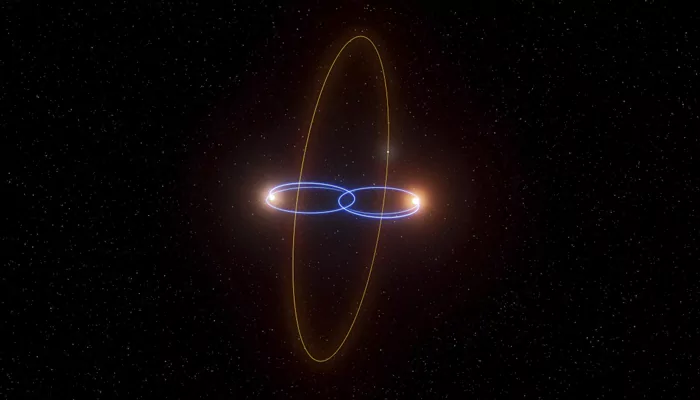
Here are today’s most important updates from the realm of Science and Space.
A mineral called siderite found abundantly in rock drilled by a NASA rover on the surface of Mars is providing fresh evidence of the planet's warmer and wetter ancient past when it boasted substantial bodies of water and potentially harboured life. The Curiosity rover, which landed on Mars in 2012 to explore whether Earth's planetary neighbour was ever able to support microbial life, found the mineral in rock samples drilled at three locations in 2022 and 2023 inside Gale crater, a large impact basin with a mountain in the middle. There are features on the Martian landscape that many scientists have interpreted as signs that liquid water once flowed across its surface, with potential oceans, lakes and rivers considered as possible habitats for past microbial life.
Solar wind + lunar surface = water?! 🌔💧
— NASA Sun & Space (@NASASun) April 15, 2025
After pelting Apollo 17 lunar samples with protons, researchers found newly created chemical signatures of water, suggesting the Sun’s constant wind may be able to create water on the Moon.
Read the story: https://t.co/hjTlpc83WZ pic.twitter.com/7AH5C0nqn7
(Credit: X/@NASASun)
A new experiment by NASA has shown that the Sun could potentially produce water on the Moon. It has been long hypothesised that ingredients of the solar wind, when they interact with the lunar surface, could create water molecules through a chemical reaction. Now researchers at NASA’s Goddard Space Flight Center saw it happen in the most realistic lab simulation. Unlike the Earth, solar winds have no trouble interacting with the surface when the Sun unleashes them. When the protons in the solar wind interacts with the lunar regolith, they bind with electrons to form hydrogen atoms. These hydrogen atoms then bond with the abundant oxygen atoms already present in minerals like silica to form hydroxyl molecules (OH), a component of water, as well as water molecules (H2O).

(Credit: AP News)
Researchers have discovered evidence that a bizarre planet, like the one depicted in Star Wars, could be revolving around two dead stars. The possible planet is approximately 120 light-years from Earth that's about 720 trillion miles. The stars in question aren't ordinary. They're brown dwarfs, colloquially known as failed stars since they're too small to illuminate like our Sun, yet much larger than gas giant planets such as Jupiter. Meanwhile, Tatooine is a fictional desert world in the Star Wars galaxy and famously the home of Luke Skywalker. Its most iconic feature is the double sunset, as the planet orbits two suns. Tatooine is dry, hot, and mostly covered in sand, but it remains a rich part of Star Wars lore and has fascinated fans for decades.

A ground-breaking project to suck carbon out of the sea has started operating on England's south coast. The small pilot scheme, known as SeaCURE, is funded by the UK government as part of its search for technologies that fight climate change. What makes SeaCure interesting is that it is testing whether it might be more efficient to pull planet-warming carbon from the sea, since it is present in greater concentrations in water than in the air. SeaCURE processes the seawater to remove the carbon before pumping it back out to sea where it absorbs more CO2.